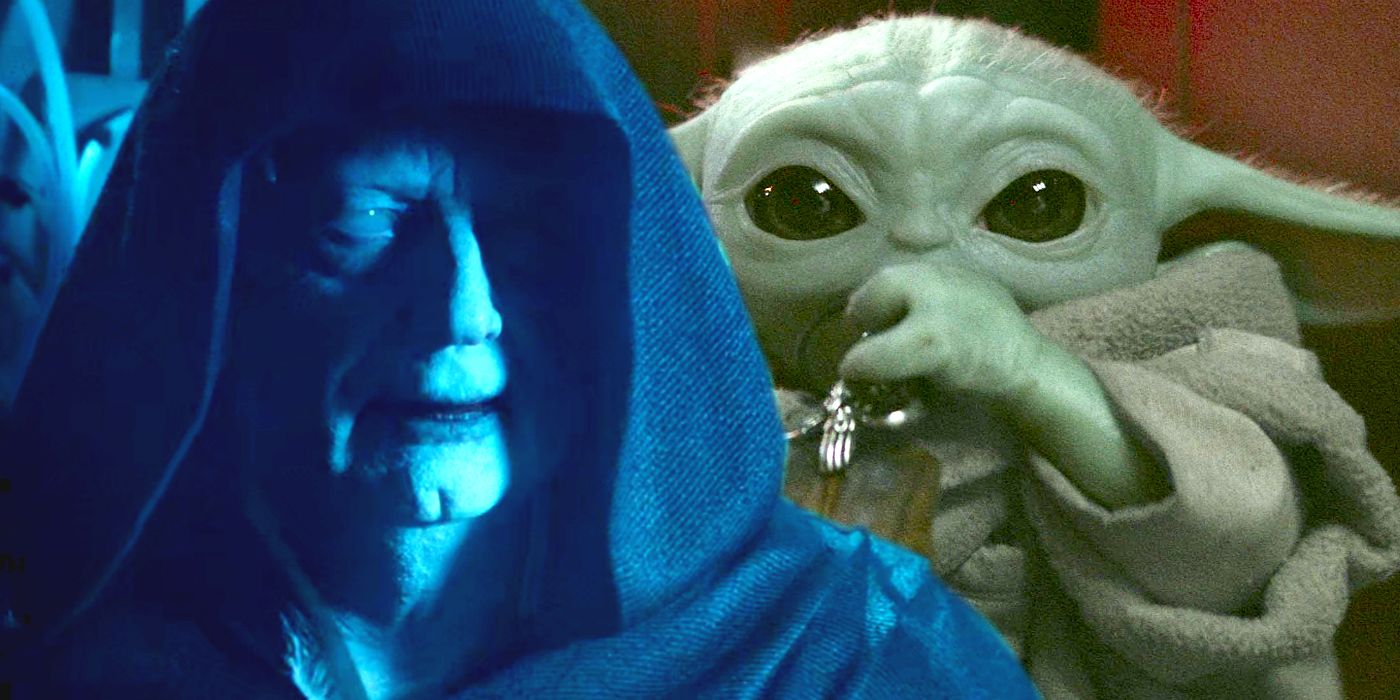It was revealed that Emperor Palpatine had several failed clones before Star Wars: The Rise of Skywalker, and that his body there was failing as well, and The Mandalorian season 2's Baby Yoda twist better sets up and explains just why that is. The Mandalorian season 2, episode 4, "Chapter 12: The Siege" brought back Dr. Pershing, the Imperial scientist with links to Kamino who briefly experimented on the Child back in season 1. While still shrouded in mystery, it confirmed that the Empire had used Baby Yoda's blood in experiments, likely to do with cloning.
This could be used to connect Baby Yoda to Palpatine and/or Snoke. Theories both before and since the episode have suggested that the Child will be used to create at least one of them, with Snoke the more likely of the two, but even if it isn't something so direct it can still tie-in. While not explicit in the movie, Palpatine was a clone in The Rise of Skywalker. On top of that, though, he'd already been through several clone bodies prior to his re-emergence in the galaxy.
In The Rise of Skywalker, it's clear that Palpatine's clone body is in a rough shape. In fact, it's so bad that he is effectively trapped on Exegol, too weak to survive leaving the planet, which is why he needs Kylo Ren (or Rey) to take his place and carry out his Final Order plans, becoming the ruler in his stead and head of a new Sith Empire. The Rise of Skywalker novelization touched upon why Palpatine's clone body was decaying, with Kylo deducing that the host could not handle his incredible dark side power. This is something better explained in The Mandalorian when it comes to Baby Yoda. As Dr. Pershing notes, the transfusions of the Child's blood into various host bodies had "catastrophic" results - while he doesn't fully elaborate on that, his comment of Baby Yoda's incredibly high "m-count", or midi-chlorian count, implies that it's because the hosts cannot handle the Force power.
That fits in well with what has been revealed about Palpatine's failed clones, and offers a little more insight into them. While Baby Yoda is seemingly very strong in the Force already, Palpatine is among the most powerful beings to have ever lived, so if hosts cannot handle the former's power, then there's no way they could take the latter. This could also be the reason behind Snoke's scarred, twisted look, which itself is presumably a product of the Force power imbued into him during his creation. Whether this was from Palpatine, Baby Yoda, a combination of the two, or something else, the tanks of similar looking figures in The Mandalorian point to an inability to handle the Force being behind Snoke's appearance as well as theirs.
It remains to be seen whether or not The Mandalorian goes so far as having Baby Yoda's blood actually used for Snoke or Palpatine, but it at the very least connects some major dots in the process of creating them. Having midi-chlorians involved can explain both Snoke's look and Palpatine's other failed clones (one of which was Rey's dad), and how the former Supreme Leader had Force powers in the first place. Interestingly, both The Rise of Skywalker and Star Wars Legends' exploration of the decaying effects of the Force on clone bodies tend to associate it with the dark side. It's possible that it applies to light to, but that it's just something the Sith have experimented with far more, or it could be another hint at the dark side of Baby Yoda himself. If Disney does commit to using Baby Yoda for Snoke or Palpatine, that's something viewers could learn much more about.


